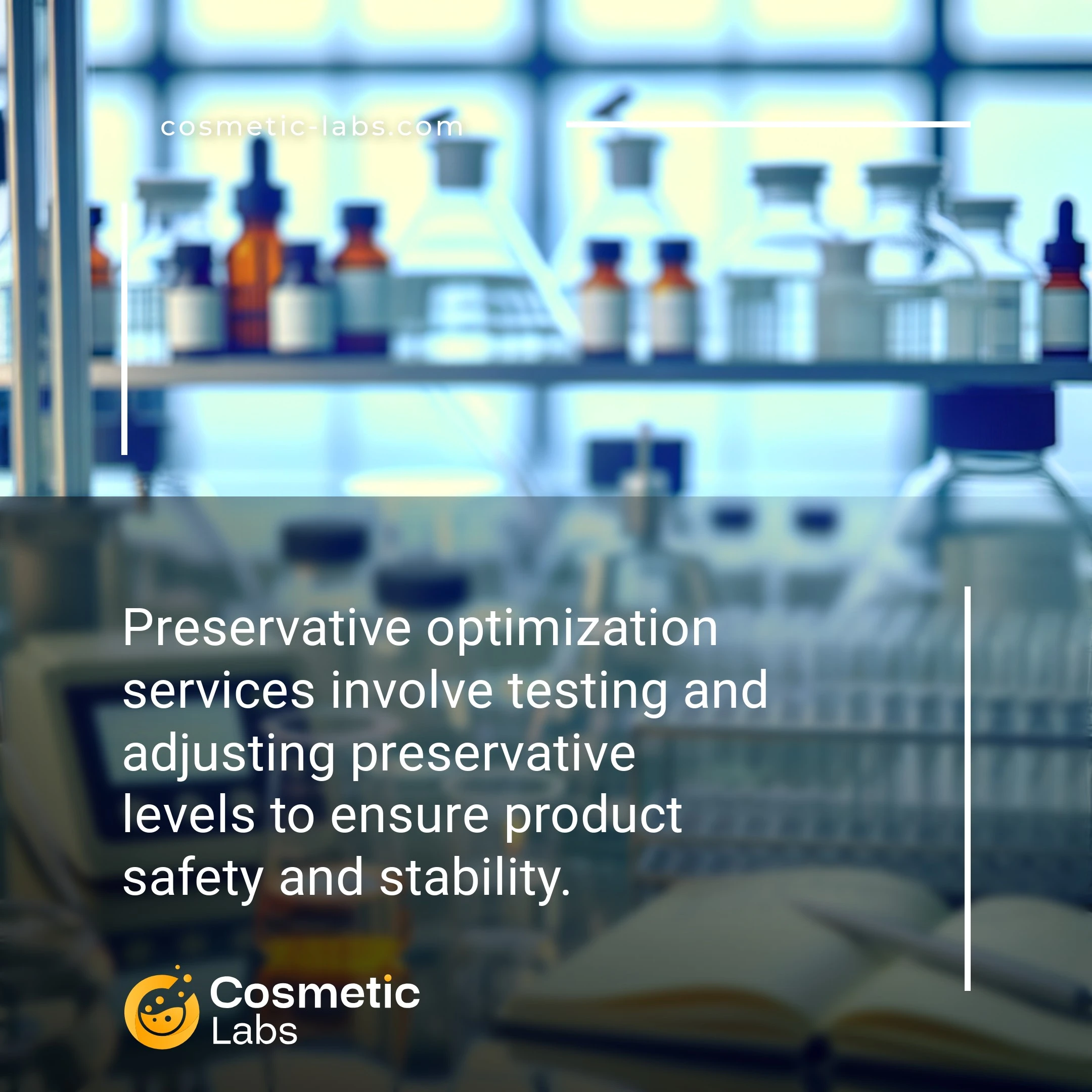Preservative Optimization Services for Reliable Cosmetic Formulations

What is Preservative optimization?
Preservative optimization services help cosmetic brands find the perfect balance between product safety and minimal preservative use. Our partner labs test different preservative systems at various concentrations, running challenge tests against bacteria, yeast, and mold to determine the lowest effective dose that meets regulatory standards. This data-driven approach often reduces preservative levels by 20-40% while maintaining full antimicrobial protection throughout your product’s shelf life.
Why do you need this service?
Cosmetic labs apply preservative optimization to reduce formula costs by 15-30% while maintaining product shelf life. They test multiple preservative combinations at different concentrations, identifying the minimum effective dose that passes challenge testing and stability protocols. This process helps brands achieve cleaner labels with fewer preservatives while meeting regulatory requirements across target markets.
Who provides Preservative optimization services?
All cosmetic labs providing Preservative optimization services
There is no company providing these services at the moment.
Preservative Optimization Services
Cosmetic labs offer preservative optimization services to help you develop products that stay safe and stable throughout their shelf life. These services balance product protection with consumer preferences for minimal preservative use.
Preservative System Development
Labs test different preservative combinations to find the most effective formula for your specific product. They evaluate factors like pH compatibility, ingredient interactions, and antimicrobial efficacy.
Key testing approaches include:
- Challenge testing against bacteria, yeast, and mold
- Minimum inhibitory concentration (MIC) analysis
- Compatibility testing with active ingredients
- Stability testing at various temperatures
This systematic approach helps identify the lowest effective preservative concentration while meeting safety standards.
Natural and Alternative Preservative Solutions
Many labs now specialize in natural preservative systems using plant extracts, fermentation products, and multifunctional ingredients. They test alternatives like caprylyl glycol, phenethyl alcohol, and botanical blends.
These labs typically offer:
- Screening of COSMOS-approved preservatives
- Hurdle technology implementation
- pH and water activity optimization
- Packaging recommendations for preservation
Working with experienced labs helps you meet clean beauty standards without compromising product safety. Connect with specialized labs on our platform to discuss your preservative optimization needs.
Real-World Applications of Preservative Optimization in Cosmetic Development
Preservative optimization directly impacts product shelf life, safety profiles, and market success across diverse cosmetic categories.
Natural and Clean Beauty Formulations
Labs optimize preservative systems for natural cosmetic products by testing plant-based alternatives like fermented radish root and honeysuckle extract. These services evaluate antimicrobial efficacy at concentrations between 0.5-2%, ensuring products meet the 28-day challenge test requirements.
Testing protocols include compatibility assessments with natural emulsifiers and pH adjustments to maximize preservative performance. Labs document how botanical preservatives interact with active ingredients like vitamin C or retinol, preventing degradation while maintaining consumer-friendly ingredient lists.
Water-Based Product Systems
Serums, toners, and micellar waters require targeted preservative strategies due to high water activity levels. Labs conduct microbial challenge tests using specific organism panels including Candida albicans and Aspergillus brasiliensis to validate preservation efficacy.
| Product Type | Water Content | Typical Preservative Load | Testing Duration |
|---|---|---|---|
| Facial Serums | 70-85% | 0.8-1.2% | 28 days |
| Toners/Mists | 90-95% | 0.5-1.0% | 28 days |
| Gel Creams | 60-75% | 0.6-1.0% | 28 days |
| Micellar Water | 95-98% | 0.3-0.8% | 28 days |
Optimization services include pH modification studies, chelating agent selection, and multifunctional ingredient screening. Results guide formulators toward minimal preservative concentrations that still achieve 3-log reduction requirements for bacteria and 2-log for fungi.